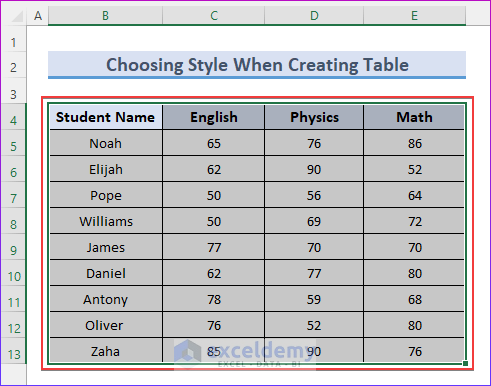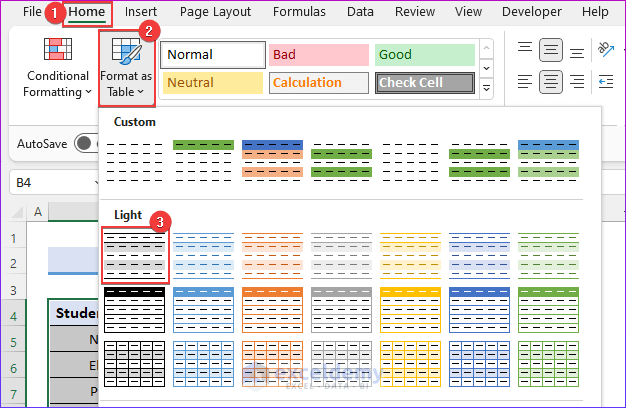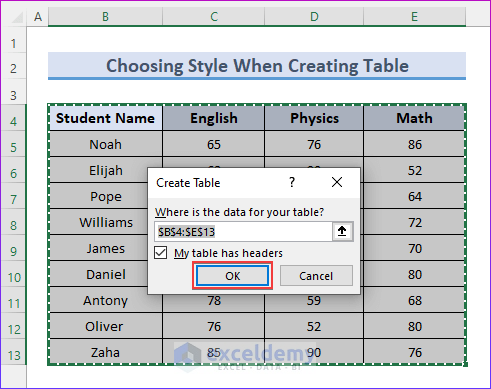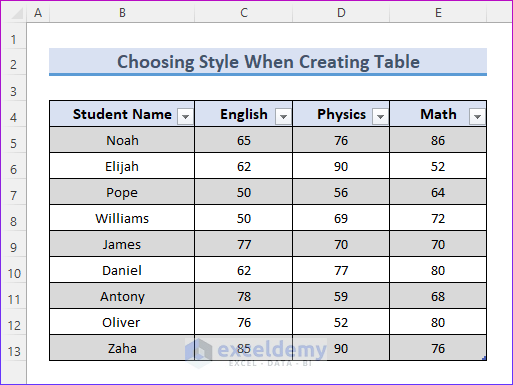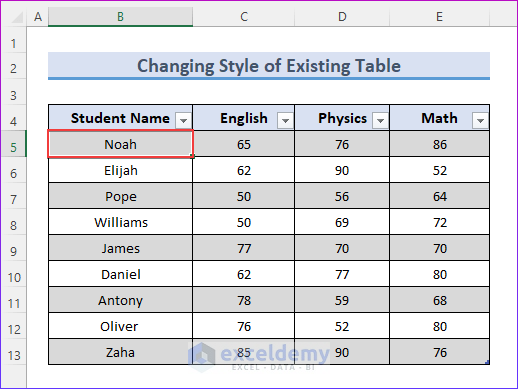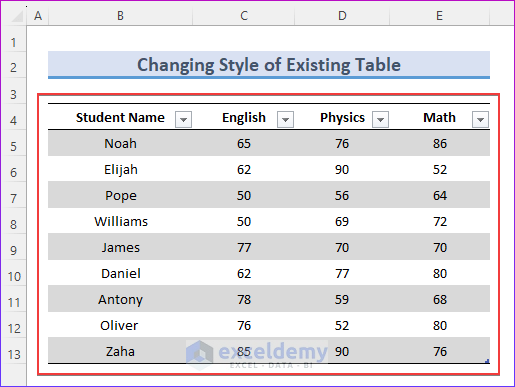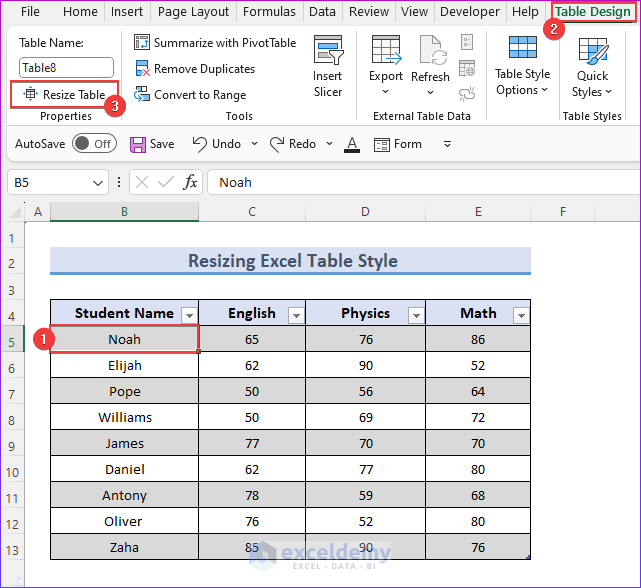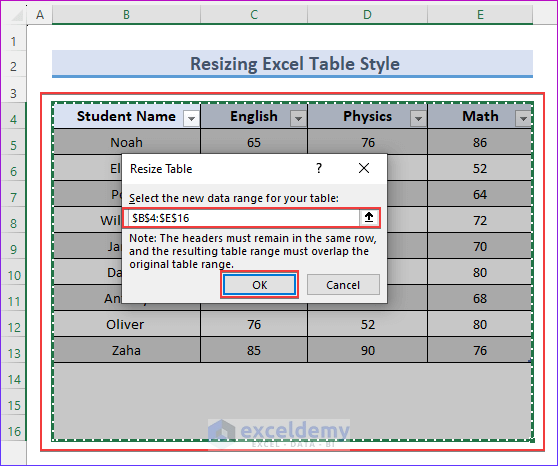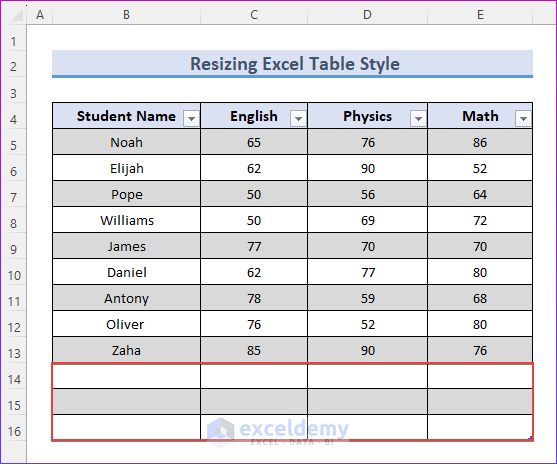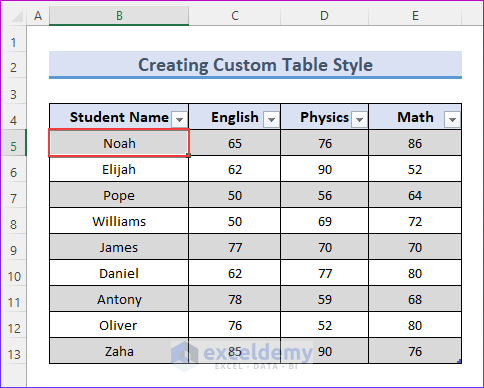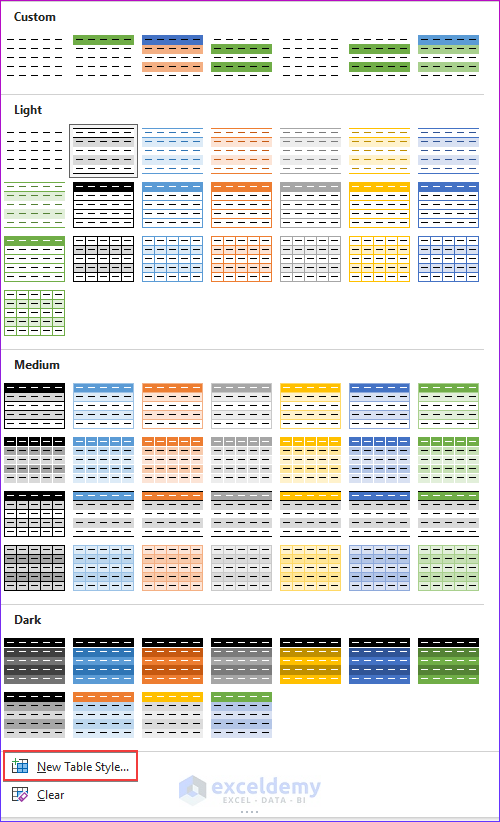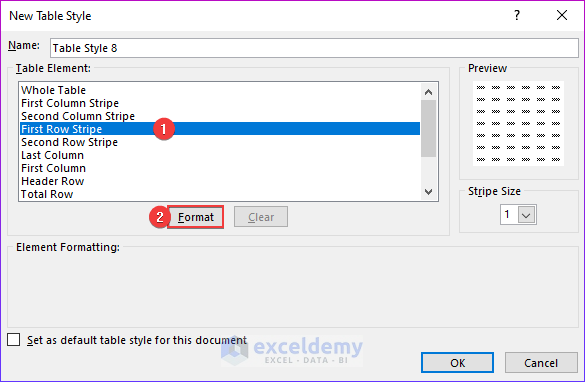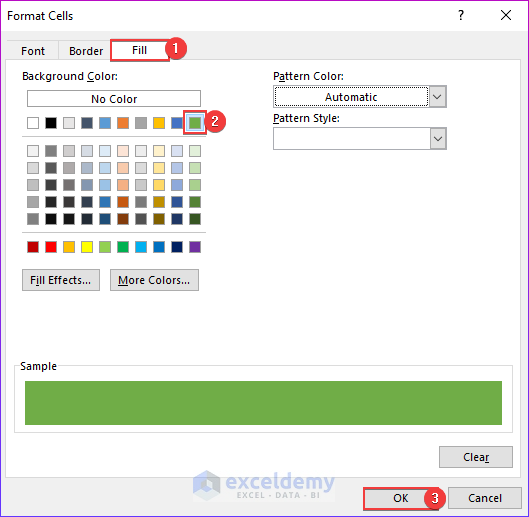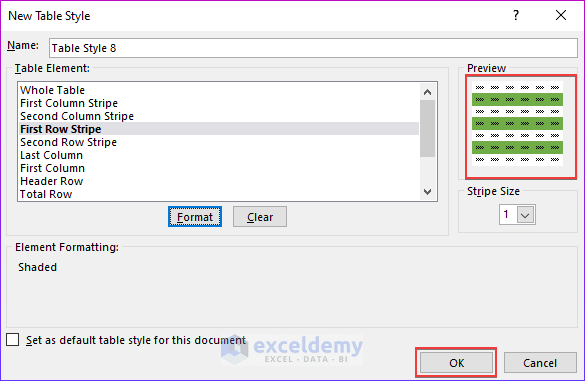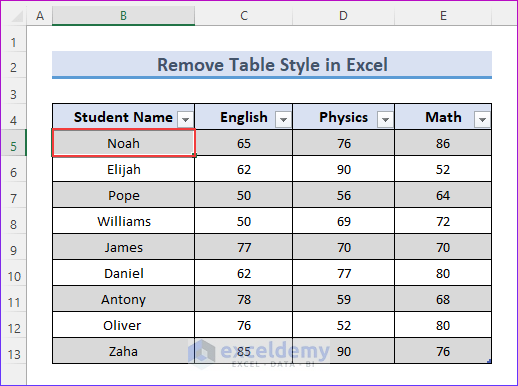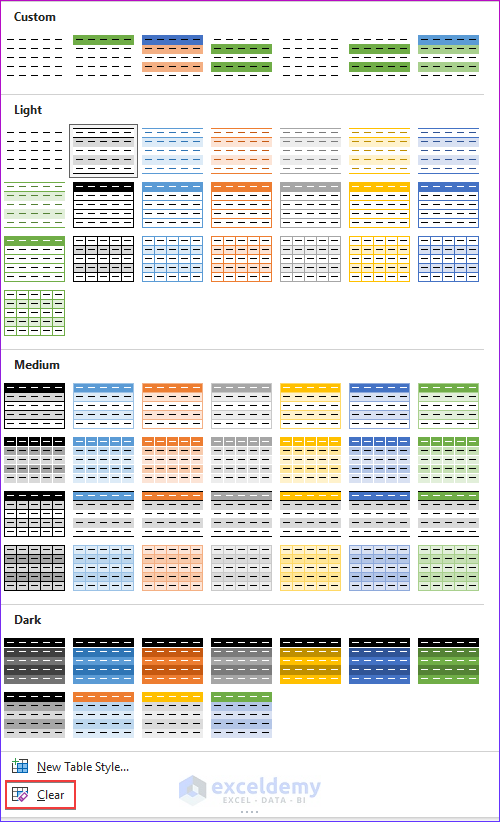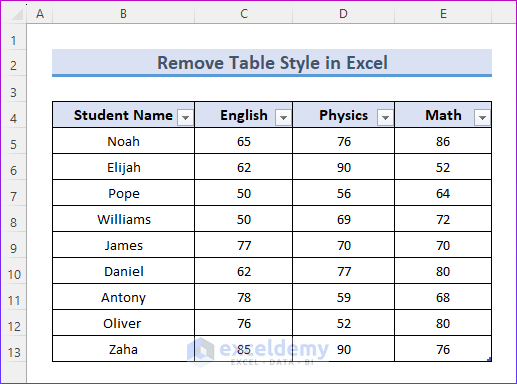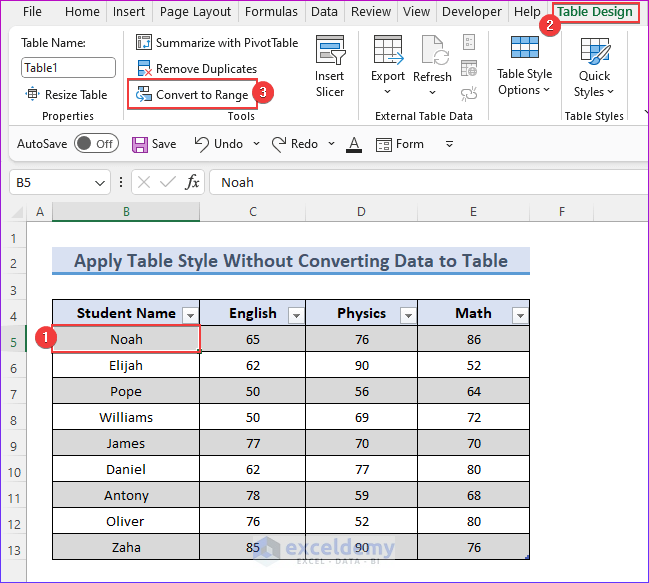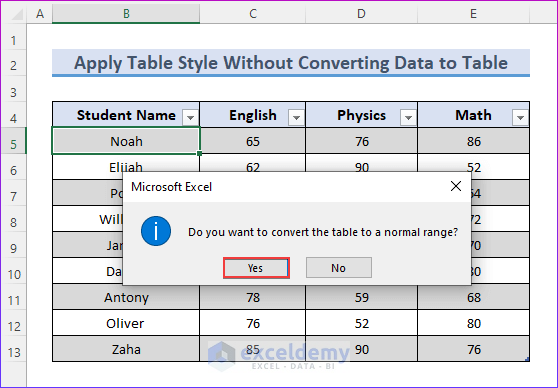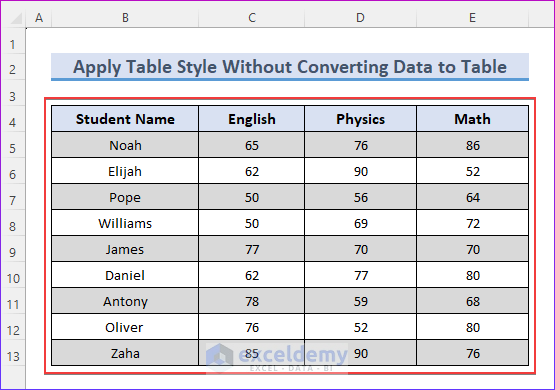Excel Table Styles & Formats is a powerful feature in Excel that allows you to enhance the presentation and organization of datasets in a worksheet by applying visually appealing and structured formatting options.
We will demonstrate how to change table style by choosing table style, creating a custom table, resizing the table style, and removing table style. You will also learn how to apply table style without converting data to a table in Excel.
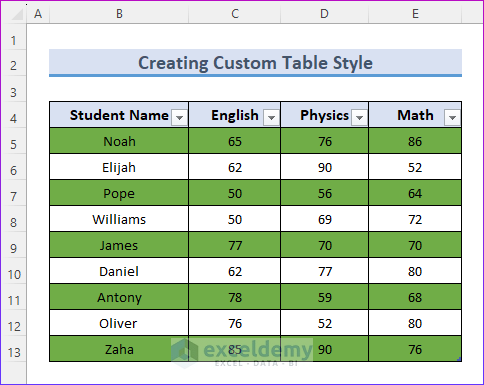
Download Practice Workbook
You may download the following Excel workbook for better understanding and practice it yourself.
5 Examples to Change Table Style in Excel
1. Choosing Style When Creating Table
We will make a table formatted with a specific style. To get a better idea how to make it, follow the steps accordingly.
- Choose the range of cells that you want to change into a table.
- Click on Format as Table tool under the Styles group on the Home tab.
- Choose any of the styles which you want to apply to create your table.
- You will see the range of cells selected in the following image.
- Make sure that “My table has headers” has been checked. Click OK.
- You can see the formatted table with a specific style in the following image.
2. Changing Style of Existing Table
If you want to apply a different style to an existing table, you can follow the below steps.
- Select any cell in the table.
- Go to the Table Design tab and click on “Apply and Clear Formatting”.
- You can see the changes in table style.
3. Resizing Excel Table Style
In this section, we will show how to change the range of the table style in Excel. To get a better idea how to resize the table, follow the steps accordingly.
- Select any cell in the table.
- Click on the Resize Table in the Table Design tab.
- Select the new data range to change the table size. Click OK.
- Now, you will get the following resized table below.
4. Creating Custom Table Style
If you want to change your table style to make it better according to your wish, you can follow the steps accordingly.
- Select any cell in the table range.
- Go to the Table Design tab.
- Select New Table Style option.
- You can select any option from the Table Element options.
- We have selected the First Row Stripe.
- Now, click Format.
- Here, we will change the fill color. To do this, go to Fill tab and choose your desired fill color.
- Click OK.
- You can see the Preview on the right side of the following window.
- Now, click OK.
- Now, choose the custom table style you have created from the Table Design tab.
- As a result, you will see the desired custom table in the following image.

5. Remove Table Style in Excel
By removing only the formatting, such as banded rows, shading, and borders, you may maintain all the features of an Excel table.
- You can select any table cell.
- On the Table Design tab, select the More icon next to the Table Styles group.
- Click Clear.
- You can see that we have removed the table formatting in the following image.
How to Apply Table Style Without Converting Data to Table in Excel
You can use the following solution if you want to quickly prepare the worksheet data using one of the built-in Excel table styles but don’t want to change an ordinary range into an Excel table:
- If you want to apply a table style to a range of cells, choose that range of cells.
- Select the preferred table style by clicking Format as Table under the Styles group on the Home tab.
- In a newly generated table, choose any cell, then click Convert to Range under the Tools group of Table Design tab.
- Click Yes.
- You can see the following output.
Things to Remember
- When creating a table, we must make sure the “My data has headers” is selected.
- Each section needs to be ready before we design our table style.
- We must always give each table a name, as it is simple to identify which tables we are working on.
Frequently Asked Questions
1. Is Excel’s table style customizable?
The table style in Excel can be changed. You have the choice to alter the table’s font, fill color, borders, and other features after choosing a table style.
2. What benefits do Excel Table Styles & Formats offer?
- The audience can easily understand the data when it is presented at a seminar.
- We can design a table in the desired style or establish the desired table style.
- By not having to repeat the process for each dataset, we may save the developed custom table style for later usage.
Conclusion
To conclude, we hope this tutorial will help you to change table style in Excel. We have discussed various examples of how to change table style in Excel with proper explanations. We highly recommend you download the practice workbook and try it yourself. Also, feel free to give your valuable feedback in the comment section.
Change Table Style in Excel: Knowledge Hub
<< Go Back to Make an Excel Table | Excel Table | Learn Excel
Get FREE Advanced Excel Exercises with Solutions!